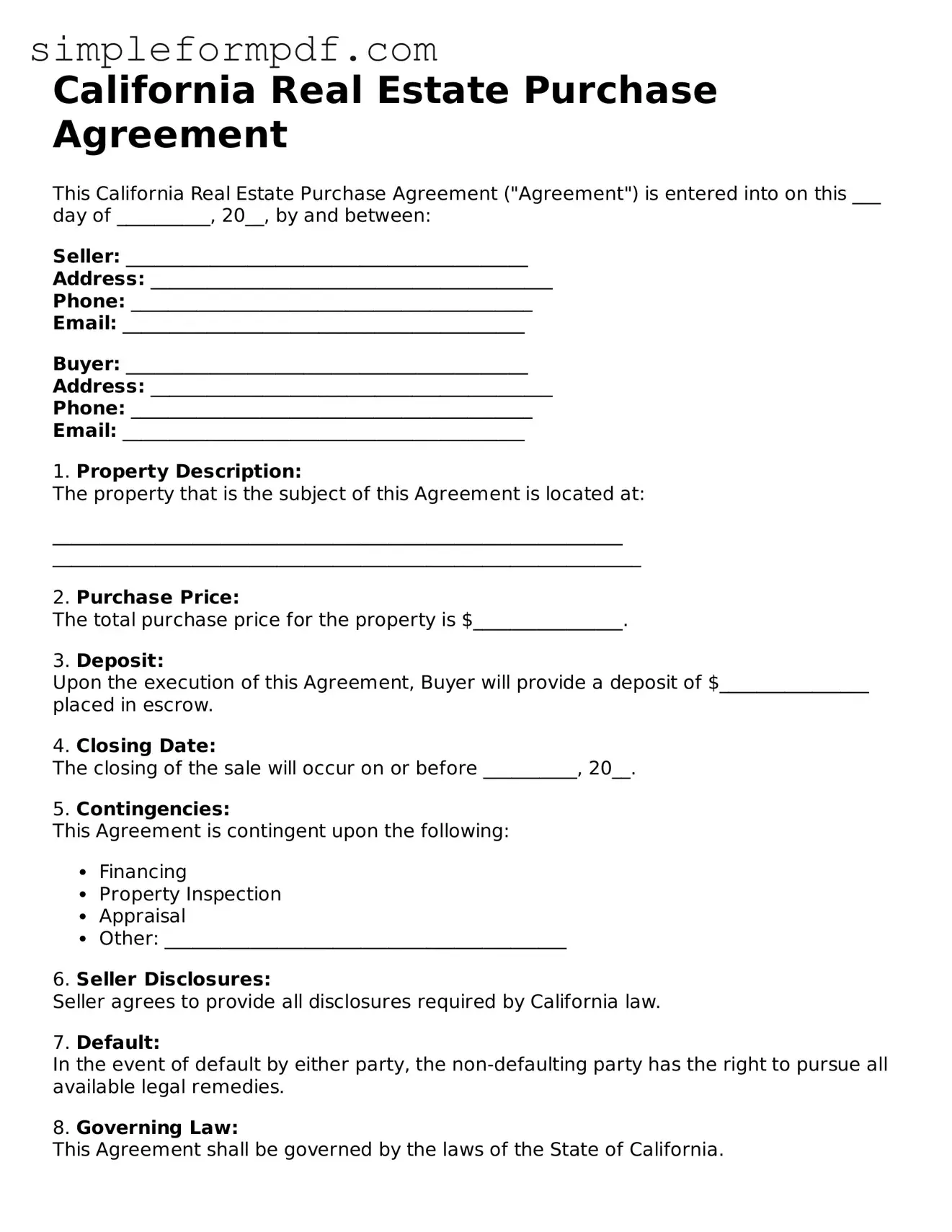California Real Estate Purchase Agreement
This California Real Estate Purchase Agreement ("Agreement") is entered into on this ___ day of __________, 20__, by and between:
Seller: ___________________________________________
Address: ___________________________________________
Phone: ___________________________________________
Email: ___________________________________________
Buyer: ___________________________________________
Address: ___________________________________________
Phone: ___________________________________________
Email: ___________________________________________
1. Property Description:
The property that is the subject of this Agreement is located at:
_____________________________________________________________
_______________________________________________________________
2. Purchase Price:
The total purchase price for the property is $________________.
3. Deposit:
Upon the execution of this Agreement, Buyer will provide a deposit of $________________ placed in escrow.
4. Closing Date:
The closing of the sale will occur on or before __________, 20__.
5. Contingencies:
This Agreement is contingent upon the following:
- Financing
- Property Inspection
- Appraisal
- Other: ___________________________________________
6. Seller Disclosures:
Seller agrees to provide all disclosures required by California law.
7. Default:
In the event of default by either party, the non-defaulting party has the right to pursue all available legal remedies.
8. Governing Law:
This Agreement shall be governed by the laws of the State of California.
9. Signatures:
By signing below, both parties acknowledge and agree to the terms of this Agreement.
_______________________ ________
Seller Signature Date
_______________________ ________
Buyer Signature Date
